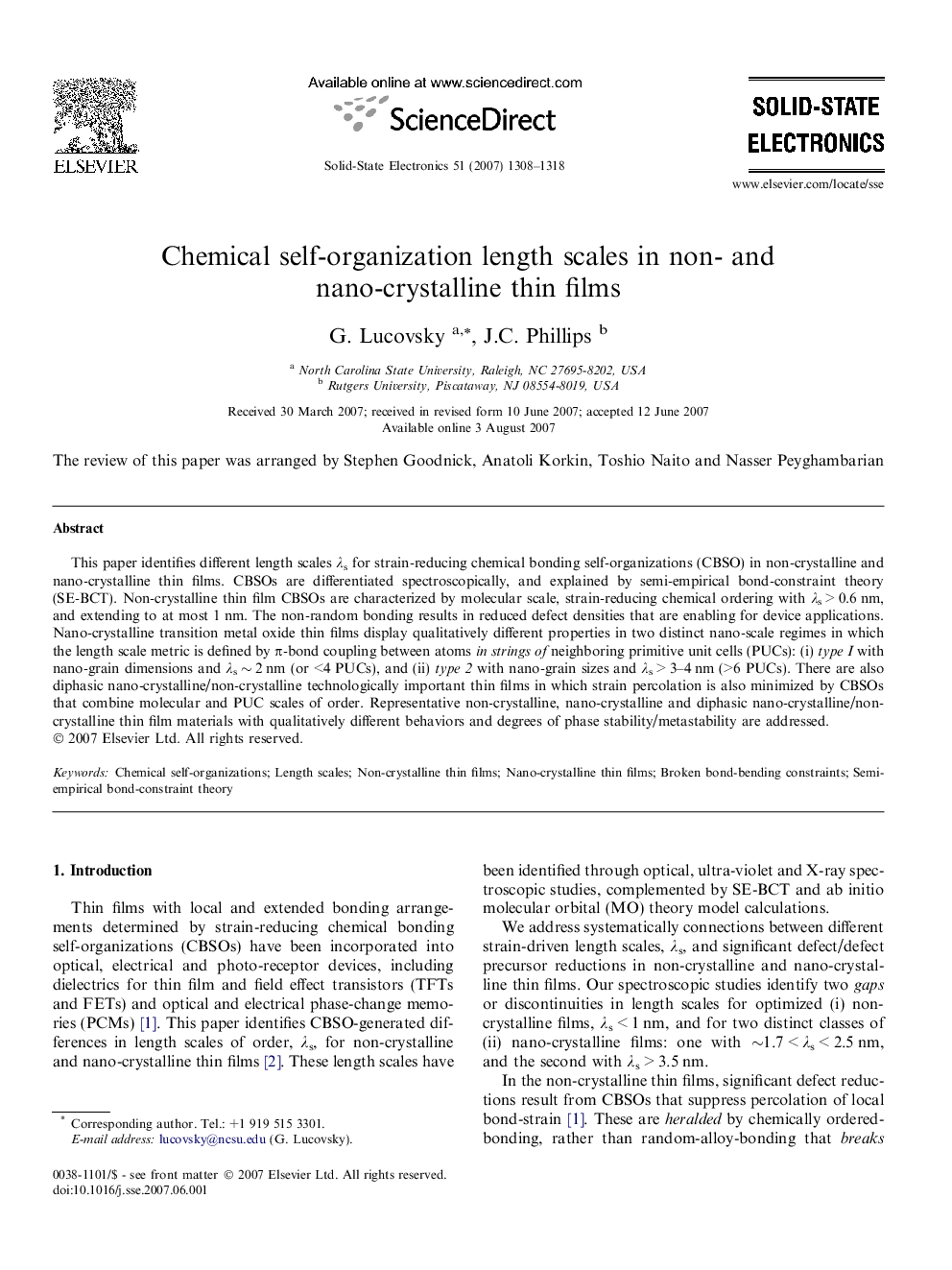| Article ID | Journal | Published Year | Pages | File Type |
|---|---|---|---|---|
| 749379 | Solid-State Electronics | 2007 | 11 Pages |
This paper identifies different length scales λs for strain-reducing chemical bonding self-organizations (CBSO) in non-crystalline and nano-crystalline thin films. CBSOs are differentiated spectroscopically, and explained by semi-empirical bond-constraint theory (SE-BCT). Non-crystalline thin film CBSOs are characterized by molecular scale, strain-reducing chemical ordering with λs > 0.6 nm, and extending to at most 1 nm. The non-random bonding results in reduced defect densities that are enabling for device applications. Nano-crystalline transition metal oxide thin films display qualitatively different properties in two distinct nano-scale regimes in which the length scale metric is defined by π-bond coupling between atoms in strings of neighboring primitive unit cells (PUCs): (i) type I with nano-grain dimensions and λs ∼ 2 nm (or <4 PUCs), and (ii) type 2 with nano-grain sizes and λs > 3–4 nm (>6 PUCs). There are also diphasic nano-crystalline/non-crystalline technologically important thin films in which strain percolation is also minimized by CBSOs that combine molecular and PUC scales of order. Representative non-crystalline, nano-crystalline and diphasic nano-crystalline/non-crystalline thin film materials with qualitatively different behaviors and degrees of phase stability/metastability are addressed.
